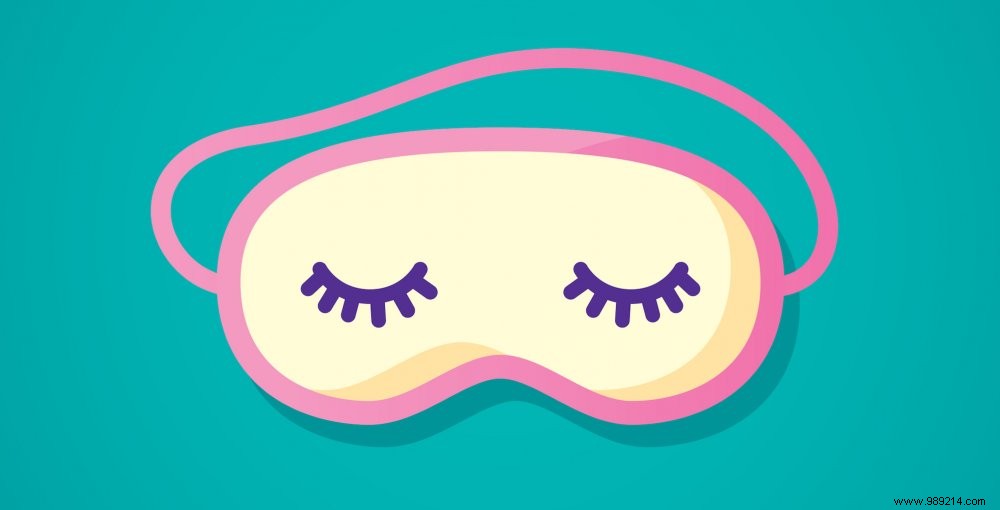 With the generalization of telework, our eyes are put to the test. Overstretched, they tire and become painful, not to mention the migraines and associated vision problems. Our tips for better eye comfort.
With the generalization of telework, our eyes are put to the test. Overstretched, they tire and become painful, not to mention the migraines and associated vision problems. Our tips for better eye comfort. Tingling, redness, burning sensation or impression of having sand under the eyelids, appearance of blurred images… 41% of French people working from home suffer from these characteristic symptoms of visual fatigue , according to a study by Atomik Research for Fellowes in January 2021.
Spending more than seven hours a day on screens requires prolonged accommodation efforts that end up tensing the eye muscles. In addition, the surface of the cornea dries out considerably because the eyes widen more than usual when facing a backlit screen (computer, digital tablet or smartphone). In other words, our eyes are tired.
In telework, for example, blinking of the eyelids is becoming rarer:“they go from 15 on average per minute to less than seven”, underlines Dr. Marcel Ceddaha, ophthalmologist. Result:the tear film, essential for the lubrication of the eye, evaporates more. And as it is less renewed, it ends up being reduced to a trickle, resulting in increased sensitivity to light, hazy eyesight, swollen eyelids and chain irritations.
Fortunately, these inconveniences are reversible.
To prevent eye strain, take a visual break 3 minutes every 40 minutes maximum. Take the opportunity to blink and gaze into the distance, staring at an object through the window or across the room to relieve the eye muscles involved in accommodation.
Video of the day:Also practice small gymnastic exercises for the eyes to relax and tone them. For example, you can scan the outline of a cabinet or a shelf by slowly moving your pupils, then relax by closing your eyes.
If the eyes become dry, the instillation of artificial tears in the form of moisturizing eye drops brings immediate relief. But this one is short-lived. It is therefore necessary to renew the application 6 to 8 times a day for an optimum result.
Contact lens wearers and people producing few tears should favor gel-based formulas that rehydrate the eye longer. One drop morning and evening before sleeping is enough to give good results.
It is also necessary to make sure to hydrate the ambient air by placing cups of water on the radiators in winter or by placing an air humidifier in the room where you work. It is also better to avoid air conditioning.
Herbal medicine can also be of great help. Infuse 10 min one tbsp. at s. of a mixture of mallow and chamomile (in equal parts) in 100 ml of hot water, let cool and soak two compresses with this preparation. Apply to eyelids morning and evening.
Well-oxygenated and well-nourished eyes are more resistant to the aggression of screens. "To stimulate peri-ocular blood circulation, close the eyelids, put your hands cupped on the eyes and practice small circular eye movements by pressing lightly for 20 to 30 seconds", advises optician Jessica Buhler.
Next, glide the tips of your fingers outward from the face and follow the contours of your eyeballs. If the problem persists, try blueberry buds:swallow 5 to 10 drops of macerate diluted in a glass of water between meals for about three weeks.
Eyes subjected to excessive light contrasts tire more quickly. To save them, it is better to work in natural daylight. If this is not possible, place a lamp whose brightness is equivalent to that of your screen. Maintain a distance between your gaze and the screen equivalent to the length of a forearm for a laptop computer and 1.5 times the diagonal of the screen for a desktop computer.
Position the center of the screen at eye level or a maximum of ten cm below eye level. And to reduce your accommodation efforts, use a larger font.
In case of persistent dry eye syndrome, consult an ophthalmologist. A poorly corrected vision disorder, such as astigmatism or farsightedness, difficulty in convergence, dysfunction of the lacrimal glands or taking certain medications (beta-blockers, anxiolytics, oral acne treatment, etc.) may be the cause .
Read also: